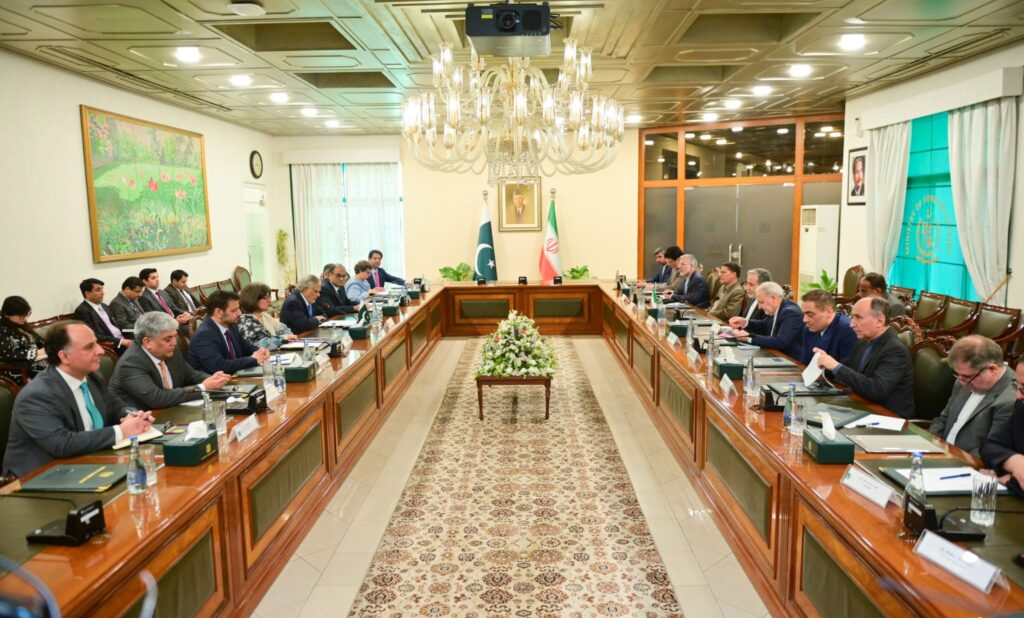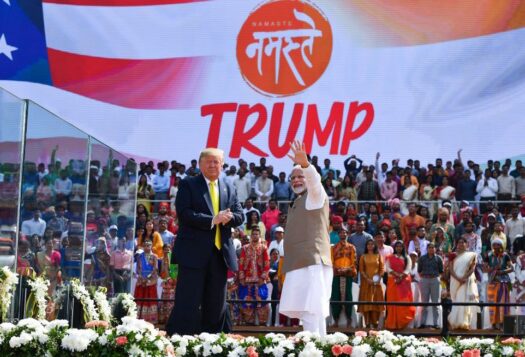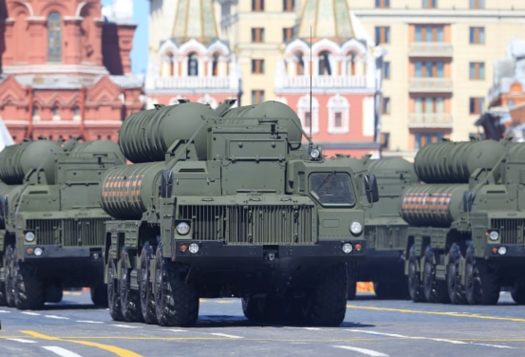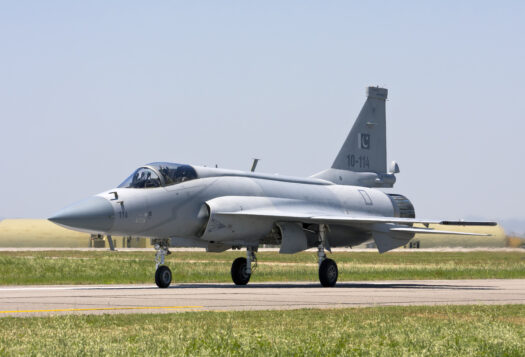
With New Delhi’s precision strikes into mainland Pakistan and Pakistan-administered Kashmir on May 7, the crisis between India and Pakistan in the wake of the Pahalgam terror attack has escalated further. South Asian Voices asked experts Yun Sun, Barbara Slavin, and Lisa Curtis to reflect on whether and how the international community can play a role in de-escalating the situation on the subcontinent in the coming days. In part 1, we look at reactions from China and the Middle East. In part 2, we will explore the evolving role of the United States and other actors.
How would you characterize China’s response to the evolving India-Pakistan crisis post Pahalgam so far? What factors contributed to Beijing’s initially slow reaction?
Yun Sun: China’s response to the ongoing crisis has been consistent with its longstanding position, including opposition to conflicts, calling for restraint and for direct dialogues—and I would not characterize it as slow. Based on Chinese Foreign Minister Wang Yi’s phone call with Pakistani Foreign Minister Ishaq Dar on April 27, China had defined the attack in Pahalgam as terrorism. As tensions escalate, China’s earlier call for an investigation quickly loses its relevance. The attention of both India and Pakistan, as well as the rest of the world, has moved onto the escalation tension and growing casualties.
The reality also demonstrates the limitation of China’s role in an India-Pakistan crisis—despite calls for China to play a mediation role, India is unlikely to accept China as a mediator because of its special relationship with Pakistan. Chinese mediation is a nonstarter.
What are China’s objectives vis a vis this crisis in the short, medium, and long term?
YS: China’s short-term goal is to de-escalate the tension on its border. Particularly given the uncertain nature of the current state of United States-China relations, China will not want distractions on its border. In the medium-term, China will place more priority on how to strengthen counterterrorism efforts in Pakistan and in the region. The long-term strategic vision and approach toward the region still largely depends on the evolution of Sino-U.S. great power competition and its impact over Indian and Pakistani external alignment choices, especially vis-à-vis China. But as previous India-Pakistan crises have shown, China is unlikely to abandon its position on Pakistan for the foreseeable future.
[There are] limitation[s] of China’s role in India-Pakistan crisis—despite calls for China to play a mediation role, India is unlikely to accept China as a mediator because of its special relationship with Pakistan.
How would you characterize Iran’s response to the evolving India-Pakistan crisis post Pahalgam so far?
Barbara Slavin: As of this writing, Iran, which has a long and sometimes volatile border with Pakistan, has been the first and only country in the region to send its foreign minister to one of the parties in an effort to de-escalate tensions. Abbas Araghchi held talks with senior Pakistani officials in Islamabad on May 5 and is scheduled to visit Delhi on May 8. Iran has important ties to both India and Pakistan and fears that a rise in sectarian hatred could impact its own restive Sunni Muslim minority including members of the Baloch ethnic group along its borders with Pakistan and Afghanistan. Fatemeh Aman, an expert on Iran and South Asia, explained to me that Tehran especially fears joint operations between Baloch militants and the ISIS-Khorasan group that could target Iran, including its port at Chabahar. The trip to Pakistan also gives Araghchi a chance to polish Iran’s diplomatic bona fides as Iran and the United States engage in sporadic efforts to resolve a crisis over Iran’s advancing nuclear program.

How are the Gulf Cooperation (Council GCC) states reacting to this crisis? What are the Middle East’s interests in this crisis and what are their objectives in the short, medium, and long term?
BS: For their part, the Arab states of the GCC have so far confined their reaction to individual and collective statements of concern and phone calls to Pakistani and Indian officials. On April 30, the foreign ministers of Saudi Arabia and Kuwait called their Indian counterpart to urge a reduction of tensions. On May 4, the entire six-member GCC issued a lengthy statement under the name of GCC Secretary-General Jasem Albudaiwi condemning the terrorist attack in Kashmir and urging both sides to exercise restraint and prioritize diplomacy. Albudaiwi reiterated the GCC’s “principled and consistent stance in rejecting all forms and manifestations of terrorism” and called for an “immediate resumption of direct talks between Pakistan and India.” Albudaiwi also warned against scapegoating and the “rising tide of Islamophobia in the region.”
It remains unclear, however, how the Saudis and Emiratis will exercise their influence or whether other mediators, such as the United States or China, will have more clout in preventing the crisis between these two nuclear-armed states from escalating further.
The GCC states—especially Saudi Arabia and the United Arab Emirates—have large concentrations of both Indian and Pakistani expatriate laborers. Giorgio Cafiero, the CEO of Gulf State Analytics, a Washington, DC-based geopolitical risk consultancy, and a frequent contributor to Stimson’s Middle East Perspectives blog, told me that, “the Gulf Arab states are watching the rise in tensions between India and Pakistan with great alarm. The prospects for a conflict between these two nuclear-armed Asian nations always disturb GCC members, which have deep and multifaceted relationships, spanning many domains, with both. With huge Indian and Pakistani expatriate communities in the Gulf Arab countries, policymakers in GCC states are always worried about how such tensions have potential to play out in cities in the Gulf—a dangerous scenario that authorities in the Gulf Arab states desperately seek to avoid. All GCC states are calling for calm, restraint, and a diplomatic resolution to this crisis which enables India and Pakistan to take the necessary steps to make de-escalation possible. To be sure, further escalation of such tensions between India and Pakistan will not serve the interests of any Gulf Arab monarchy.”
How might the current geopolitical environment—marked by India’s growing ties with Saudi Arabia and the United Arab Emirates vis a vis Pakistan’s traditionally strong but somewhat unfulfilled relationship with the Middle East—shape the crisis’s trajectory? What potential role can/will the Middle East play in this crisis and what levers does it hold vis a vis Pakistan and India?
BS: There is no doubt that India and Saudi Arabia have strengthened ties in recent years as evidenced by Prime Minister Narendra Modi’s recent visit to the Kingdom. There are nearly 3 million Indian citizens living and working in Saudi Arabia and bilateral trade last year was worth nearly USD $43 billion. The two countries are also major investors in each other’s economies—USD $3 billion on the part of India and USD $10 billion in Saudi investments in India. So, Saudi leaders are in an excellent position to urge the Modi government to exercise restraint. As for the United Arab Emirates, it hosts nearly 2 million Pakistani expat workers who send home USD $5.5 billion in annual remittances—crucial income for Pakistan’s struggling economy. It remains unclear, however, how the Saudis and Emiratis will exercise their influence or whether other mediators, such as the United States or China, will have more clout in preventing the crisis between these two nuclear-armed states from escalating further.
With a variety of newer potential crisis managers jump into the fray, from Riyadh to Tehran, what are your thoughts on their role as effective crisis managers and what levers do they hold?
Lisa Curtis: Personally, I do not see Iran playing a helpful role. Iran has had separate issues with Pakistan; and despite some initial exploratory talks, the United States presently considers Iran a pariah state. I do not see them playing a major role in this crisis.
However, Saudi Arabia has the potential to play a strong role. Saudi Arabia has growing ties with India. We have seen the talks of the India-Middle East-Europe economic corridor (IMEC). Simultaneously, Saudi Arabia has good relations with Pakistan and has provided assistance in the past. Saudi Arabia has a certain degree of leverage with both countries and could potentially play a role. However, the Pahalgam attack, which was allegedly conducted by Islamist-inspired terrorists that singled out Hindus, would dictate against Saudi Arabia being able to mediate effectively with the Indian side.
Therefore, while some other countries may play limited roles, the United States stands out as the best placed to be able to influence both countries and prevent what could become a potentially disastrous situation. I still see the United States as the best equipped, and the most effective country to prevent nuclear war in South Asia.
This post has been updated to include Lisa Curtis’ responses and the description has been edited to include further reflections on this topic.
Views expressed are the author’s own and do not necessarily reflect the positions of South Asian Voices, the Stimson Center, or our supporters.
Also Read: SAV Q&A with Lisa Curtis: The Pahalgam Crisis & U.S. role For more analysis on Pahalgam and its aftermath, read our entire series here.
***
Image 1: BASIT ZARGAR via Getty Images
Image 2: Ministry of Foreign Affairs, Pakistan via X


